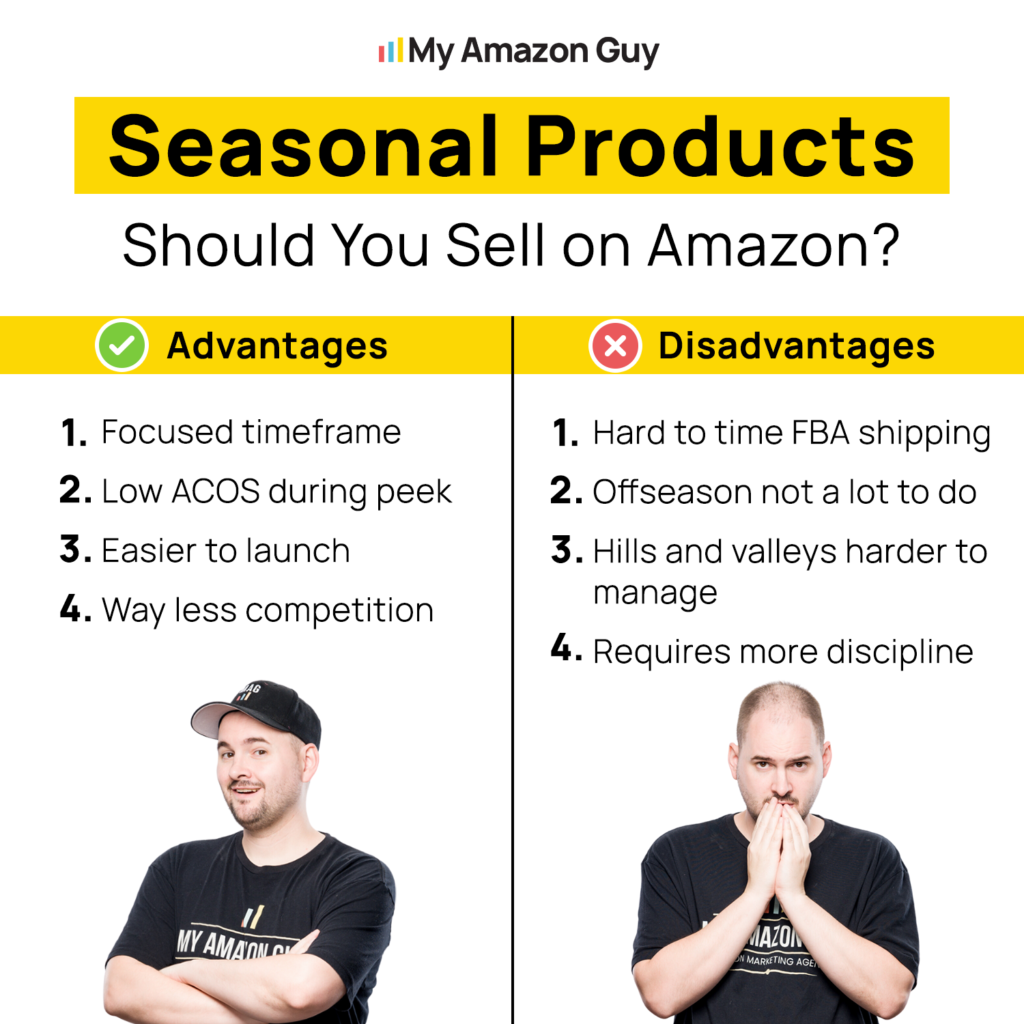Not getting enough Amazon ad impressions? You’re not alone.
Many Amazon sellers invest time and money into their PPC campaigns, only to find that their ads fail to gain the traction they expected. Despite your best efforts, your ads may still struggle to appear in front of potential customers.
This lack of visibility can be frustrating, as it not only impacts your sales but also limits the data you need to improve your campaigns. Understanding the reasons behind this issue is crucial to overcoming it.
In this article, we’ll explore the top challenges that lead to low ad impressions and share proven strategies to boost your ad visibility on Amazon. So, read on!
10 Common Reasons Sellers Struggle with Gaining Amazon Ad Impressions
If you’re wondering why your Amazon ads aren’t getting the impressions you anticipated, you’re likely encountering one or more common issues that can significantly reduce your ad visibility. Let’s look into the top 10 reasons that could be holding your ads back:
1. Keywords That Don’t Match Shopper Searches
When your keywords don’t match what customers are actually searching for, your ads are less likely to appear in search results. This issue often arises when keywords are either too broad, too niche, or don’t accurately reflect your product.
Amazon’s algorithm prioritizes ads that closely align with user search queries, so if your keywords are off-target, your ad impressions will inevitably suffer. Misaligned keywords often result from inadequate research or a misunderstanding of customer search behavior, leading to lower visibility for your ads.
2. Targeting Too Narrowly
Overly restrictive targeting settings can limit your Amazon ads’ reach, resulting in low impressions. This usually occurs when you set very specific criteria, such as focusing on a small demographic or using highly precise keywords.
While targeting a specific audience can be beneficial, being too narrow can reduce your ads’ potential to appear in front of shoppers, making it challenging to gain visibility.
3. Ad Content That Misses the Mark
Ads that lack quality or relevance are less likely to be shown by Amazon’s algorithm. This happens when ad copy, product images, or descriptions don’t resonate with what shoppers are seeking.
If your ads don’t clearly convey the value of your product or aren’t visually appealing, Amazon may prioritize other ads that better meet shopper expectations. Misalignment between ad content and targeted keywords or customer search intent also leads to fewer impressions.
4. Running Out of Budget Too Quickly
A limited daily budget can restrict how often your ads appear, leading to fewer impressions. Amazon’s advertising platform favors ads with higher budgets that can sustain visibility throughout the day.
If your budget runs out quickly, especially during peak hours, your ads will stop showing until the next day. This often happens when sellers underestimate the budget needed to compete effectively, resulting in missed opportunities for ad impressions.
5. Mismatched Ad Timing and Low Bids
Ad scheduling and bid adjustments are critical in determining how often your ads are shown. If your ads run during off-peak hours or your bids are too low, your ads might not be competitive enough to win impressions.
Poor timing or conservative bidding can cause your ads to lose visibility, especially against competitors who target peak times more effectively.
6. Not Accounting for Seasonal Changes

Seasonal trends and demand fluctuations can greatly impact the number of ad impressions your campaigns receive.
Highly seasonal products, like holiday decorations or winter clothing, may see a sharp decline in impressions during off-peak times.
Changes in consumer behavior during events like Prime Day or Black Friday can also cause spikes or drops in impressions.
Sellers often miss these shifts, leading to periods of low visibility.
7. Struggling in a Crowded Market
In highly competitive categories, it can be difficult for your ads to gain impressions. When many sellers bid on the same keywords or target similar audiences, it’s harder for your ads to stand out.
Competitors with larger budgets or more optimized campaigns can easily outbid your ads, pushing yours down in the auction and reducing visibility. This is particularly challenging in saturated markets, where many sellers compete for the same customer base.
8. Bids That Don’t Compete
Setting your bids too low can reduce the chances of your ads winning in Amazon’s auction system, leading to fewer impressions. Amazon’s ad placement is heavily influenced by your willingness to pay per click.
If your bids are lower than your competitors, your ads may not be displayed as frequently, or at all. This is especially problematic in competitive niches where higher bids are necessary for prominent placements.
9. Overusing Negative Keywords
Negative keywords prevent ads from showing up for irrelevant searches, but if not managed carefully, they can also block relevant impressions.
This issue occurs when sellers are too aggressive with negative keywords or inadvertently add terms closely related to their product. Overuse or incorrect application of negative keywords can limit your ads’ reach, reducing opportunities for impressions.
10. Poor Campaign Organization
An inefficient campaign structure can lead to low ad impressions. When too many keywords are grouped in a single campaign or ad group, budget and bids may become diluted, causing some keywords to receive fewer impressions.
Additionally, if campaigns aren’t segmented by match type or product type, it can be difficult to optimize effectively. Poor organization often results in reduced performance, as campaigns struggle to compete for visibility across multiple keywords and targets.
Increase Your Impressions on Amazon: 8 Proven Strategies to Stand Out
Now that we’ve identified the common pitfalls that can limit your impressions, it’s time to focus on how to turn things around. Improving your ad visibility isn’t just about avoiding mistakes—it’s about strategically enhancing every aspect of your campaigns.
In this section, we’ll explore proven strategies that can help you generate enough impressions, ensuring your products get the attention they deserve.
1. Optimize Your Listing for Keywords: Utilize Misspellings and Long-Tail Keywords
Don’t underestimate the power of misspellings and long-tail keywords. Common misspellings of high-volume keywords or specific long-tail phrases often face less competition and can drive substantial traffic to your listings.
Utilize tools like Helium 10’s Magnet to uncover valuable keywords that may not be immediately apparent but are crucial for visibility. Incorporating these variations into your product titles, bullet points, or A+ Content can improve your indexing and attract more impressions.
For a comprehensive guide on identifying and using these keywords effectively, check out our video tutorial.
2. Bid Competitively: Mastering Amazon PPC Auctions
While Amazon’s suggested bids provide a baseline, placing higher bids can significantly improve your ad visibility. This approach allows you to gather crucial performance data more quickly.
It’s important to balance higher bids with a keen eye on conversion rates. If your product isn’t converting well, high bids may lead to a higher ACoS (Advertising Cost of Sale), impacting your profitability. Monitor your conversion rates to ensure that your increased visibility translates into actual sales.
If you observe a higher ACoS, consider reviewing your organic ranking with the search query performance report. This will help determine if high costs are due to effective keywords or if there are other factors at play.
3. Increase Your Daily Budget: Ensure Consistent Ad Visibility
A higher budget allows your ads to run more frequently and reach a larger audience. This is especially beneficial during peak shopping times or when promoting new products.
Evaluate your current budget and consider increasing it to avoid running out of funds too early in the day. This adjustment helps ensure that your ads maintain a consistent presence, maximizing your chances of capturing more impressions and sales throughout the day.
4. Refine Your Targeting Parameters: Broadening Your Reach
Refining your targeting parameters is crucial for increasing impressions. Our Amazon agency has explored a new feature in Amazon’s PPC platform that allows you to add high-performing keywords from automatic campaigns into manual campaigns without removing them from the auto campaign.
This strategy helps you leverage the broad reach of auto campaigns while taking advantage of the precision and control offered by manual campaigns. By targeting the same keywords in both campaign types, you can enhance your product’s visibility and capture more relevant traffic.
5. Improve Your Ad Quality: Stand Out with Custom Headlines and Images
Custom headline ads are an underutilized feature that can significantly improve your visibility. Craft engaging headlines and use high-quality custom images to make your ads stand out.
Consider incorporating thematic or seasonal visuals that resonate with your target audience. For example, if you’re promoting a product range, create a cohesive theme across your ad copy and imagery.
This not only attracts more clicks but also aligns with Amazon’s algorithm, which favors ads that engage users and lead to conversions. By focusing on ad quality—through compelling headlines, well-chosen images, or a consistent brand message—you can increase your chances of gaining more impressions, leading to better overall campaign performance.
6. Enhance Your Negative Keyword Strategy: Gain Potential Impressions
Instead of immediately negating high-cost keywords that are making sales, focus on adjusting bids and monitoring conversion rates. Regularly review your search term reports to identify and exclude terms that are spending your budget without delivering returns.
Negative keyword management should be a last resort after other cost-control methods have been exhausted. This approach ensures that you maintain ad visibility while controlling unnecessary expenditures.
7. Target High-Volume, Relevant Keywords: Optimize for Maximum Impact
Boost your Amazon advertising impressions by focusing on high-volume, relevant keywords. Regular keyword research is key—use tools like Helium 10’s Cerebro and Magnet to identify and track these keywords.
Optimize your product listings by incorporating these keywords into titles, bullet points, and descriptions. Analyze the search query performance report to fine-tune your strategy and ensure you’re targeting the most effective keywords.
8. Improve Your Campaign Structure: Organize for Better Performance
Ensure that your campaigns and ad groups are logically organized and targeted effectively. Use distinct campaigns for different product categories or keyword themes to streamline management and optimize performance.
By improving your campaign structure, you can better allocate your budget, track performance more accurately, and make informed adjustments to enhance your overall ad visibility.
Sure Ways to Increase Your Advertising Impressions: Overcoming Low Impressions on Amazon
Boosting your Amazon ad impressions means addressing common challenges with smart strategies.
To increase your product’s visibility, align keywords with shopper searches, broaden targeting, and improve ad content. Optimize bids and budgets, and implement strategies like competitive bidding and refining negative keywords to enhance your click-through rate.
Regularly review and adjust your ad campaigns to maximize impressions. By applying these methods, you’ll drive more traffic and significantly improve your Amazon ad performance.
Are your Amazon product ads getting low impressions and clicks? Contact our Amazon agency today!





